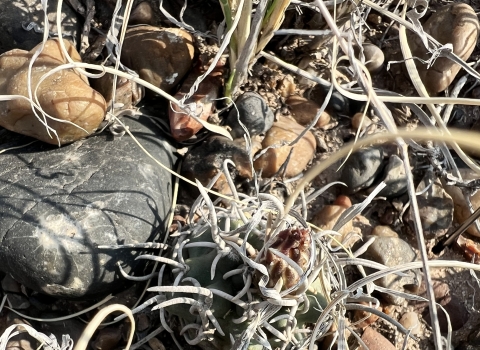The U.S. Fish and Wildlife Service announced over $1 million in grants to 37 states and the District of Columbia to help combat white-nose syndrome, a fungal disease that has killed millions of North American bats in recent years. Funds will help states find ways to prevent the spread of WNS while increasing survival rates of afflicted species.
Natural resource agencies in Illinois, Indiana, Iowa, Michigan, Minnesota and Wisconsin will receive a total of $166,292 for programs to fight white-nose syndrome, including conserving habitat, surveying and monitoring bat populations and slowing the spread of the disease.
Grants to Midwest states include:
- Illinois: $25,825
- Indiana: $30,000
- Iowa: $22,390
- Michigan: $30,000
- Minnesota: $30,000
- Wisconsin: $28,077
The grants bring the total funding to states for white-nose syndrome response over the last eight years to $7 million. This financial support is part of a Service-led, cooperative, international effort involving more than 100 state, federal, tribal, academic and non-profit partners.
“White-nose syndrome has ravaged bat populations in many parts of this nation. Funding from the Service provides state fish and wildlife agencies with critically important support to manage and mitigate the spread of the disease to new areas of the country,” said Nick Wiley, President of the Association of Fish and Wildlife Agencies and Executive Director of the Florida Fish and Wildlife Conservation Commission. “The Association greatly appreciates the Service’s role in coordinating a national response to white-nose syndrome and the funding support for state responses to this wildlife disease crisis.”
First discovered in New York in the winter of 2006-2007, the fungus has now spread to 33 states and five Canadian provinces and infects eight of the top 10 agricultural producing states. Insect-eating bats keep agricultural pest populations down, saving farmers at least $3.7 billion per year in lost crop revenue and preventing the need for spraying costly toxic chemicals. Some farmers install “bat box” homes to increase the number of bats protecting their crops.
“Bats are beneficial in many ways,” said Jeremy Coleman, National White-nose Syndrome Coordinator for the U.S. Fish and Wildlife Service. “While state natural resource agencies are on the front lines of bat conservation, many have limited options for responding to this devastating disease without these funds. Activities supported by state WNS grants have been critical to the national response.”
For example, Indiana is home to 13 bat species, including the endangered Indiana bat and the threatened northern long-eared bat. Ten other bats are listed as species of greater conservation need. The Indiana Department of Natural Resources will receive $30,000 to build and install large bat houses to give bats a place to recover after emerging from hibernation in sites affected by white-nose syndrome. The funds will also be used to enhance monitoring and survey work and to provide habitat for bats.
In addition to developing science-based protocols and guidance for land management agencies and other partners to slow the transmission of disease, the Service has funded many research projects to understand the disease and support sound, effective management responses, including the application of disease treatments. Priorities this year include coordination and research for WNS treatment trials in collaboration with the Bats for the Future Fund, along with bat monitoring, response planning and conservation actions.
Additional information about white-nose syndrome is available at whitenosesyndrome.org. You can also learn more by following the Service’s white-nose syndrome Facebook, Twitter and Flickr pages.



